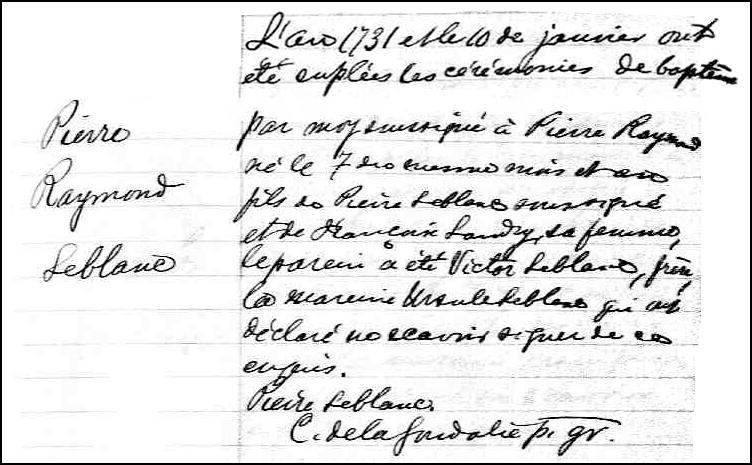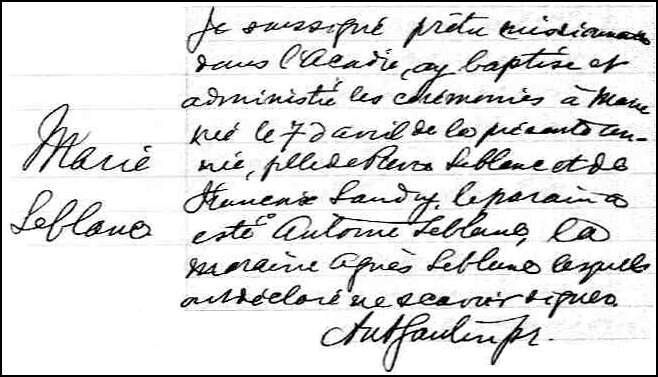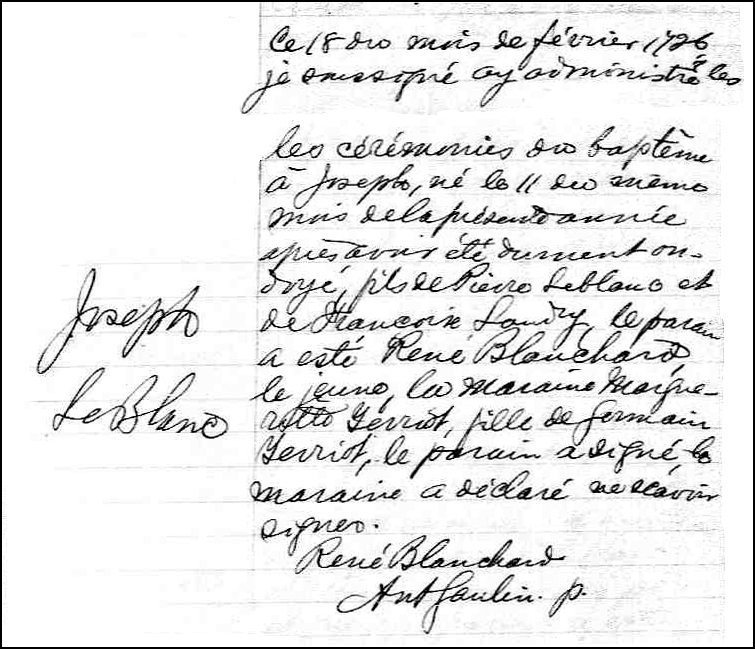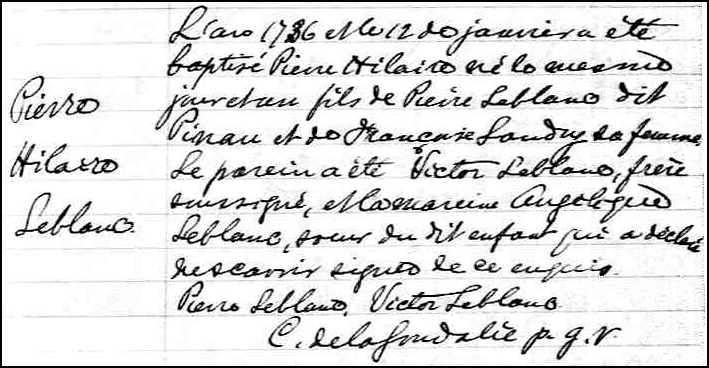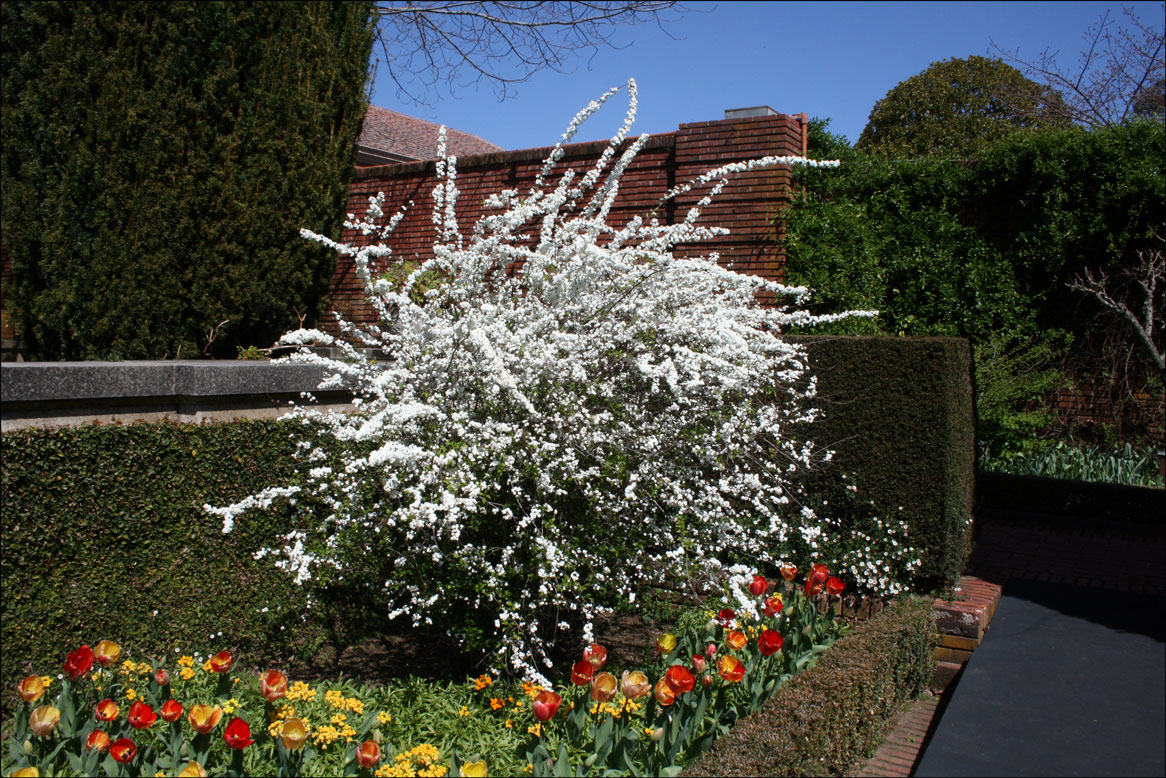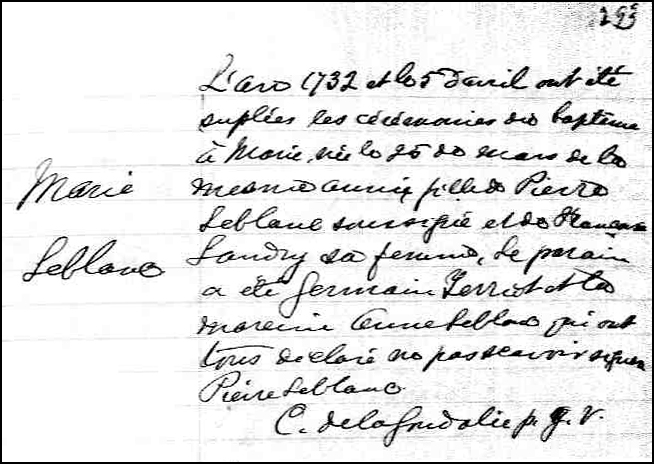On 7 Jan 1731, Pierre Raymond LeBlanc, son of Pierre LeBlanc and Franí§oise Landry, was born. He was baptized in the parish of St. Charles de la Grand Pré de Mines de L’Acadie on 10 Jan 1731.
The Birth and Baptismal Record of Pierre Raymond LeBlanc – 1731
SOURCE: Gabriel Drouin, comp. Drouin Collection. Montréal, Québec, Canada: Institut Généalogique Drouin. Parish of St. Charles de la Grand Pré de Mines de L’Acadie, Acadia, 1731. Birth and Baptismal Record of Pierre Raymond LeBlanc, page 274.
Click on the image above to enlarge it. Click on the link for a PDF copy of the Birth and Baptismal Record of Pierre Raymond LeBlanc. Translated from the French the record reads:
Pierre Raymond Leblanc
In the year 1731 and on the 10th of January
were supplied the ceremonies of baptism
by me, the undersigned, to Pierre Raymond
born on the 7th of the same month and year,
son of the undersigned Pierre LeBlanc
and Franí§oise Landry, his wife.
The Godfather was Victor LeBlanc, brother,
and the Godmother was Ursule LeBlanc, who
has declared that she does not know how to
sign as required.
Pierre Leblanc.
    C. delafondalie p.gv.
This record can be found as image 278/317 and image 279/317 in the Acadia French Catholic Church Records (Drouin Collection), 1670-1946 on Ancestry.com in the records for St-Charles-les-Mines Baptíªmes 1707-1733. The record appears on pages 273-274.
Copyright © 2008 by Stephen J. Danko

